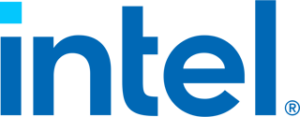Throughout the Open RAN Global Forum (register for on-demand access to the virtual event here), there was a recurring theme around Open RAN being part of a larger technological transformation encompassing the move towards cloud, software, data and more IT-centric operations. This shift is mirrored in how operator buying patterns are changing to include open systems, integrated systems, reliance on external system integrators to assemble network kit, and even serving as their own integrator.
NEC provides integrated RAN (and other products), pieces of Open RAN systems, and serves as an integrator for major operators around the world. “In our view,” NEC Global Vice President of 5G Product Management Patrick Lopez said, “the market has a need for all of that…I think that those different choices or these different options are really what the market needs.”
Regardless of the approach the operator prefers, Lopez circled back to the point that Open RAN is explicitly about that optionality. “Our customers want choice and if Open RAN stands for anything, it’s to provide choice—choice in term of different vendors, different solutions…The problem with 5G is to create connectivity products that are adapted to different use cases, different geographies, different verticals. That’s not possible with vertically-monolithic solutions. You need to be able to mix and match in order to create solutions that are adapted for different use cases.”
In supporting this optionality while being mindful of need for fast deployment, industry consortia, partner ecosystems and individual companies are increasingly automating the interoperability testing and integration process. If you extend this paradigm forward, “The outcome is going to be much more quicker, more automated, more streamlined, more flexible,” Viavi’s Wong said. “I think that’s what we’re seeing here and this is across the whole industry. If you think about it, we’re kind of morphing ourselves into really adopting these much more IT-centric, software-centric approaches.
If you look at the parallel developments of Open RAN and using AI/ML for network automation, as well as thinking about how 6G is being envisioned as cloud-native and AI-native, Viavi Solutions Director of RF and Wireless Architecture, Office of the CTO, Ian Wong said a change of mindset, and a change in skills sets within the telecoms workforce, is necessary.
“We’re in data science, AI and ML. These are things that are taught pretty much at the undergrad level in all the universities now. So I see this as a transformation of our industry to really adopt these processes and it won’t come overnight. We are of course leveraging expertise in other aspects of other industries, but I think the outcome will be much more flexible, much more open, much more agile and automated networks in the future.”
Just like some operators require external system integration expertise to deploy disaggregated RAN, the Open RAN ecosystem itself requires an integrator to coordinate specification efforts, interoperability testing, development of RAN blueprints tuned to specific use cases, and shared learnings from field work.
Meta’s Bhartendu Chaurasia, Head of TIP Technology for Europe and the Middle East, likened TIP to a platform provider. “We are not into writing standards. We collaborate closely with the O-RAN Alliance, take the inputs from there, work with MNOs to provide their requirements, work with OEMs to provide…those requirements, and then do this blueprinting and testing and validation…The second lens in TIP is when we go and talk to partners who are getting into deployment of Open RAN.” In addition to the technical support, the ecosystem also looks to TIP to facilitate the aforementioned “change of mindset” with its TIP Academy which is focused on upskilling resources.
“We don’t expect going forward five to seven years that engineers will be looking into red, blue, yellow, green lights on a machine. Rather they will be doing some coding, fixing the microservices to do things more automatically. So this shift of competence is required and TIP is taking some actions there with TIP Academy…And then we go for programs where we bring all these players together and share this knowledge.”


